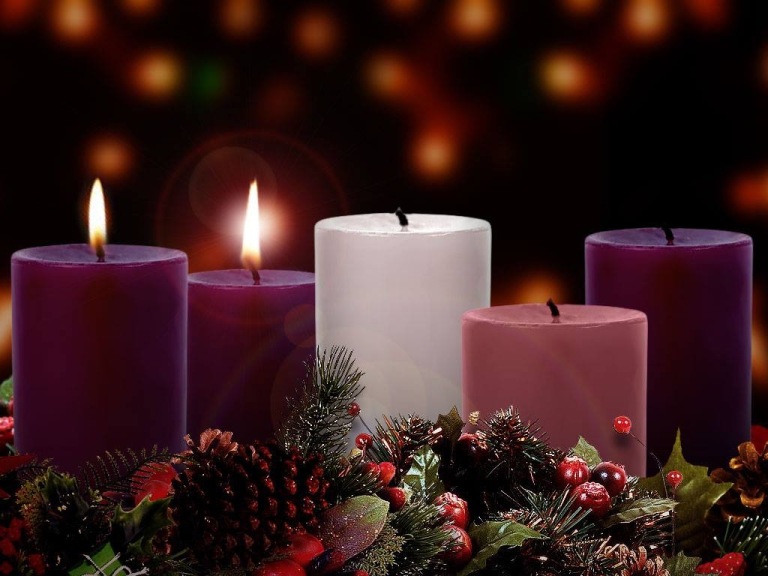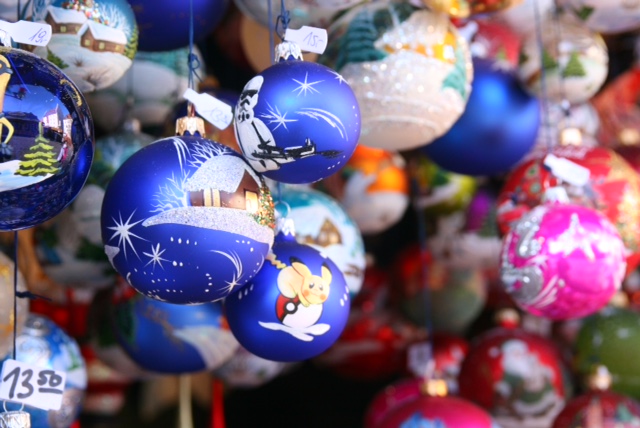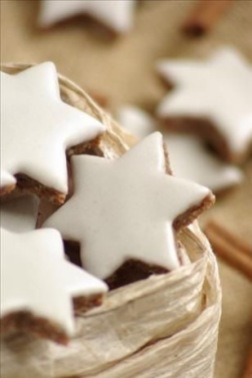Ever wonder what makes Christmas or Weihnachten in Germany different from the rest of the world? Every country has its own traditions, but have you ever wondered how Germans celebrate Christmas?

There’s no stopping time now, few more weeks and November is over and here comes the end of 2017. And yes, Christmas is really just around the corner. Snow came early to Germany and winter-feel is definitely in the air. As the fire in the sky continue to pull the days closer to the merriest time of the year, also the darkest time, Christmas or Weihnachten is heavily anticipated not only here in Germany, but also in the rest of the world. If you are planning to have a white Christmas or visiting Germany in the summer, you can now have the chance to learn about the unique and surprising German Christmas traditions in the Deutsches Weihnachtsmuseum located in Rothenburg ob der Tauber, a well-preserved medieval town, also here in Bavaria.

It’s almost a decade now that I don’t celebrate Christmas in my home country, the Philippines. Time really flies,and it feels even surreal. I totally missed the way we do it as a family, just like in the old times. It’s quite the norm from where I grew up that once the calendar months ends in-ber, say from September, it signals the start of Christmas frenzy!We start to hear Christmas songs played in the radio, the shops are flooded already with Christmas decorations, and yes, office Christmas parties are planned. The raffles, the never- ending exchange gifts, and yes—the most awaited Christmas bonus! I will never forget the evening mass and “Noche Buena“, the Kris Kringle madness, the jaw-dropping Christmas foods, and the crazy traffic during Christmas shopping! Everything is just so festive!

For the past years, I have seen so many differences in the way that other culture celebrate the most colorful time of the year, and for Catholics, it’s probably the most festive. When I was still living in Kuwait, although it’s a Muslim country, the spirit of Christmas can still be felt, unfortunately only in the confines of private accommodation and flat. At work, we were also granted with a holiday from work during Christmas Day. I even attended the midnight mass once. I noticed that more and more shopping malls have their Christmas decor and it is being talked about. The large number of expats in the Middle East is the reason, why even miles away from home, you can still celebrate Christmas with friends and families. I had my first German Christmas last year here in Bavaria , with full anticipation (since I am very curious). I found many interesting German Christmas traditions that is worthy to document here in my Blog as part of my Expat life.
If you want to know how Germans celebrate Christmas the German way, then you might find this post helpful. So keep on reading and stay with me.
Here I wanna share with you the surprising German traditions for Christmas that I personally love!
Christmas in Germany is beautiful, unique, homey and very warm!

The Advent Wreath or Der Adventskranz
The moment I saw these wreaths and candles, I know that Christmas is near. Back in my home country, I see these decorated wreaths as purely decorational, of course, minus the lighted candles.They are used to adorn the doors, and add to the already overwhelming Christmas decorations together with all the garlands in the walls, stairs etc. Not so here in Germany, because Advent time is important for Germans.
The German Christmas season officially starts at the first Sunday of Advent, roughly 3rd of December. The Advent wreath (or Adventskranz) is adorned with four candles, one of which is lit on each of the four Sundays preceding Christmas. The first Advent wreath, which appeared in the mid-19th century, had 4 larger candles and 19 smaller ones. Each day, one additional candle was lit to help the children count the days until Christmas. Today only the four larger candles remain. Many Germans love to decorate their Adventskranz up to their own taste but there are also so many different designs of ready-made ones sold in almost every shop.
Adventskalendar —the sweet way of Christmas countdown.
During Advent season, you will never miss the sight of tons of Adventskalendar , (literally a Calendar with small boxes) almost overwhelming in many designs, colors, and yes, all with yummy goodness chocolates or sweet goodies. This is one of the obvious signs that Christmas is coming. This is a delight for children and the child at heart. In the Adventskalendar, there are 24 “windows” that reveal a picture, poem or even part of a story – often the story of the Nativity – each day through December right up to Christmas Eve when the secret behind the largest window is revealed. Seeing Germans do panic-buying of Adventskalendars especially when they are on Sale is a typical sight as early as 2nd week of November! This is totally German thing!
Weichnachtsplätzchen or German Christmas Cookies
You know it’s the Advent season here in Germany when your nose is filled with heavenly delicious German Christmas cookies. Germans are very into home- made baking. They really appreciate if you made the plätzchen yourself and not store-brought. They are great bakers of cookies and other treats.There are lots of baked treats that will surely keep your mouth-watering. My favorites are vanillekipferl (vanilla crescent cookies) Lebkuchen, Zimtsterne (cinnamon stars), Linzer cookies and Spekulaas as well.Germans love to use lots of almonds, hazelnuts, butter flavored marzipan and cinnamon in baking. Believe me, German cookies are too beautiful and heavily decorated to eat!
Weihnachtsmann Schokolade or Chocolate Santa Claus
Its only here in Germany that Chocolate Santa Claus ( or Weihnachtsmann) floods the shelf of all supermarkets here in Germany. Prior to Christmas, St. Nikolaus is celebrated on the 5th of December and so most Germans get this yummy figures in many sizes. If you have a child, I am sure you will get this one as well.

Christmas Tree or Der Tannenbaum
With over 400 years in history, the Tannenbaum or the Christmas Tree is the real thing in Germany! The German Tannenbaum is usually put up and decorated on Christmas Eve, though some families opt to put up their tree during the Advent season. Please don’t tell anyone, but we already put up our Christmas Tree! Maybe my neighbors are shaking their heads when they see our lighted tree from our windows! I also see my neighbors starts to decorate their windows and garden with white lights. Who doesn’t? For us, Weihnachtsfreude (Christmas Joy) comes early! In Philippines, this is also the norm.

I grew up in adoration of Christmas Tree. Traditionally, I think it’s not complete when we don’t have a tree. Recently, on my research of German inventions, I found out that Christmas trees or Tannenbaum, actually originates here in Germany. I saw the biggest tree that I have ever seen in my life, to top it all— a REAL Evergreen Conifer , decorated with glass baubles, covered in real snow. Although there are lots of varieties for the plastic ones, most Germans still opt to put up the traditional real tree. During Christmas season, almost all town put up a giant tree in the city center adjacent to the place of Christmas market.Decorated with beautiful, handmade balls, and usually adorned with white lights.Compared to the Philippines, here I noticed that they only use white lights instead of colorful, blinking Christmas lights. And NO— they don’t decorate their whole house with lights!It’s also fascinating to know that it was German immigrants who brought the Christmas tree to America.

In Germany, Christmas balls are not just an ordinary tree ornament. Where most of the modern Christmas ornaments and plastic balls nowadays are made in China, USA or Mexico, the origin of these “baubles” or Glaskugeln came from Germany. The old town of Lauscha in German Thuringia is said to be the place of the handmade, glass-blown Christmas bauble.
Below is the photo of the family Weschenfelder work on Christmas balls in their combined living room and work space in the small village of Lauscha.


Christmas Markets or Christkindlmarkt
In Germany, despite the freezing temperatures, almost all towns are converted into one colorful, festive, unique Christmas wonderland during few weeks before Christmas day. Our local Christkindlmarkt is open since November 23 up to Dec. 23. Every place has its own attraction and each one has their own special features that draws attraction to everyone. If you want to have a glimpse of what is Christmas market all about, check this and it will bring you to a winter wonderland!

Today there are over 2,500 Christmas markets across Germany. One of my dream came true when I experience Christkindlmarkt last year. Famous ones are in Nuremberg, Munich and Rothenburg. Most markets are open also on Sundays and draws lots of visitors from neighboring places.This is the best time to see Germany in its most colorful and unique display of celebrating Christmas with the highlights of the Christkindl —the German equivalent for the world-renowned Santa Claus and depicted as an angelic figure with blond hair & wings. It’s really not time of the year without a Christkindlmarkt here in Germany.

St. Nikolaus and the Christkind
Santa Claus originated as a Catholic figure. The Christkind was created by Protestants. Christkind transformed from a suggestion of Baby Jesus into a blonde, female angel. In Nürnberg, each year a teenage girl is chosen to represent the Christkind in the weeks leading up to Christmas. She is known as the Nürnberger Christkind and, much like with Santa, children take pictures with her and tell her what gifts they would like for Christmas. The highlight of each Christmas markets is the German’s famous mulled wine or “Glühwein” or hot spiced wine, the Krippenweg, the beautiful craft stalls, and lots of traditional German Christmas food. There are so many attractions for kids like carousel, trains, carousel and the ice skating rink. One thing worth mentioning is the efficiency of Germans in their way of setting up the whole place into a big arena winter wonderland within weeks or so.

Sankt Nikolaustag ( Dec. 5 or 6)
I grew up believing the magical tale of Santa Claus as someone who is a bearded old man, with a big belly, dressed in red outfit riding the sleigh with sacks of gifts. All the way from the North pole giving gifts to children. But in Philippines, we don’t have snow neither reindeer or chimneys, so this makes me cringe now. For many children, sitting in the lap of Santa Claus while being photographed is one of the most unforgettable time during Christmas. They either scream in anguish or shriek in delight! Here in Germany, there is no such thing as Santa Claus, only the Weichnachtsmann who is a favorite among children during St. Nicholas Day! My daughter will be celebrating her 2nd St. Nicholas in their Kindergarten this year.

In Germany, December 5th is a very special night. Many children put their cleaned boots and shoes outside the front door on the night of 5 December. They believe that St. Nicholas fills the boot with nuts, oranges, gifts and sweets overnight. Sometimes the Nikolaus also visits the children at the Kindergarden or in the school and asks them if they have been good.My daughter already hung her sock in their Kita for the upcoming St. Nicholas. In Holland, as similar to this celebration, Sinterklaas is also a big celebration before Christmas.

Christmas Eve – Heiliger Abend (also Heiligabend)
December 24 is still a regular working day here in Germany. But around 2:00 pm, often even earlier, businesses, and most shops are close in preparation for the holiday celebration, a large part of which occurs on Christmas Eve in Germany. The traditional evening meal includes carp and potato salad, but nowadays it varies from what each family loves to prepare. Families sing Christmas carols together and may read the story of Christ’s birth aloud.This is the counterpart of our traditional “Noche Buena” without the roasted pig, Christmas ham and Queso de Bola ( Cheese ball)! Compared to the Philippines and other countries, I don’t see Christmas Carollers here either that goes from house to house, at least not in our neighborhood.Probably because its hard to sing and be out at night when its freezing cold at night.
Family members exchange gifts and children are typically the focal point of the gift exchange. Here in Germany, opening gifts on Heiliger Abend is the normal way, compared to other countries who opens the gifts on the morning of December 25th.
I grew up attending Midnight Christmas mass or Simbang Gabi. We usually attend evening mass on a 9-day series of mass up to the” Misa de Gallo “or ( Christmas eve mass) . Here in Bavaria, I only went to the mass on Christmas Day, German families – whether Protestant or Catholic and even those who are not regular church-goers – often attend mass or a church service. While the mass traditionally takes place at midnight, in recent times the services have moved into the earlier evening hours. It is terribly cold around midnight or in early morning so the schedule of the mass usually happens around 9 in the morning. The mass is in German and it was a great experience for a first timer like me who listens to Christmas songs in German.
Second day of Christmas ( or St. Stephen Day)
Here in Germany, you have an excuse to sleep in after the big party from Christmas. Yes, Germans and other countries in Europe including the Netherlands have 2 days of Christmas, both are legal and widely celebrated holidays! This is a mellow day, a quiet day to recover from the hustle of everything. Depending on the weather, people are still very active, running, jogging and doing sports during the 2nd day of Christmas. For typical Germans, they spend the second day of Christmas with their families, visiting Grandparents, enjoying seasonal threats and of course–ruhe or enjoying some peace & contemplation.
Also, do you know what else Germans do after Christmas?
Christmas won’t be complete without shopping!
They go shopping to grab the year-end clearance sales and buy everything on a decent price! Yes, Germans are practical, and spend their money wisely! Last year, we got our 7- foot Christmas Tree on sale for half of its original price!And we will be on the lookout once again for great things to buy this year!
How about you, do you also have unique Christmas traditions?
How do you prepare for Christmas for your family?
Sending you some warm cheers for the coming holidays!
Tschüss!




I must admit that even though I am Lutheran I never knew that the Christkind is a blonde female 😀
Besides I barely ever heard it up here except in a few Christmas songs, could be also that it depends more on the region.
This Christmas here will be like all the others, dark and rainy with few storms
LikeLiked by 1 person
You may be in one of the most beautiful places in the world-and especially at Christmas, I hope your Christmas is lovely.
LikeLiked by 1 person
Oh Thank you so much. Yes, I am grateful to see this place, nothing is ever easy but it is my second home now. I wish the same for you.
LikeLiked by 1 person
Thank you Timo…I discover so many new things and “unique”here in Bayern that I really need to document it here in my Blog. Some things that may sound as totally normal to you or to locals but to the rest of the world, its totally a German thing!
I agree on dark and rainy..its like everyday is gloomy and the cold is something that I am not excited about.
LikeLiked by 1 person
I have no issue with the cold but the rain is just terrible. In Finland we had at least tons of snow to brighten up the day a bit
LikeLike
oh what a sweet wish! thank you! love Michele
LikeLike
So lovely and festive! Merry Christmas ❤ I hope you enjoy every moment of the beautiful celebration.
LikeLike
Thank you so much Diana.
LikeLiked by 1 person